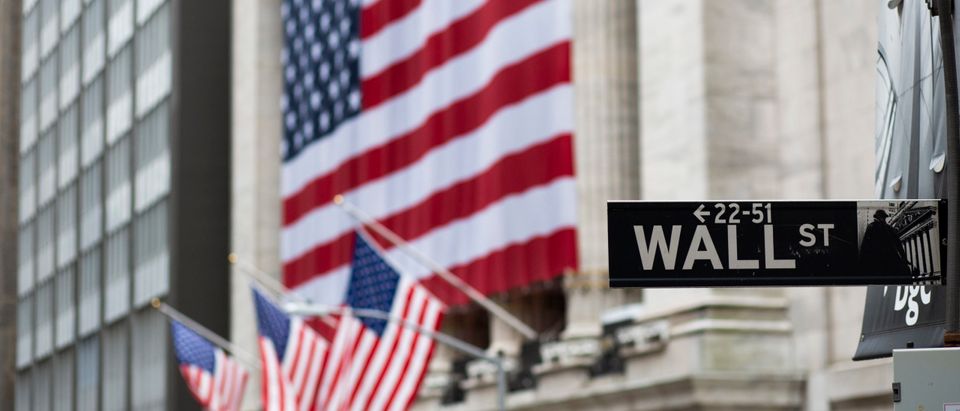Wall Street moves around billions, if not trillions of dollars every day. But the way companies are managing their assets may only be helping shareholders and stock prices without creating much real-world value, according to a recent study by the American Compass.
American Compass executive director Oren Cass found in a firm-level analysis of business investment that money once allocated to productive assets — including capital, wages and intellectual property — is mainly being diverted to shareholders. The report concluded that prioritizing these short-term payouts to investors over long-term investment is hindering growth and worsening inequality.
Thread (1/12). How have Wall Street’s fortunes diverged so radically from Main Street’s in recent decades? I think a large part of the explanation comes down to our misunderstanding of the word “investment.” Most “investors” are doing nothing of the sort. https://t.co/9Apsh4IKyw
— Oren Cass (@oren_cass) March 25, 2021
Most companies historically returned some excess profits to shareholders while re-investing the remainder back into productive assets. This capital investment has long been considered a primary driver of economic growth, according to the Congressional Research Service.
The American Compass study published in late March looked at the pattern of capital investment among publicly traded companies dating back to 1971. Cass categorized these companies into sustainers and eroders based on their level of capital investment relative to the depreciation of their assets.
Sustainers “invest in new assets faster than they use up existing ones,” in turn experiencing more growth and higher levels of investment. Cass noted that “most companies in a well-functioning capitalist economy” are typically sustainers. Companies considered sustainers mainly included technology firms such as Apple, Microsoft, Amazon and Facebook.
Eroders on the other hand, “[allow] their capital bases to erode even while paying to shareholders the resources they would have needed to maintain their health.” Companies considered eroders included AT&T, Cisco and IBM.
Cass also identified a third category of firms called growers, represented by smaller companies that usually borrow funds to generate growth beyond the amount of money they earn in profits.
The American Compass study found that less than 20% of financial assets across the economy were owned by eroders during the 1970s. But that trend began to reverse beginning in the 1990s, and by 2017, nearly half of all financial assets were in eroders.
4/ The result is an enormous outflow of resources from the real economy back to the financial markets — an excess of more than $3 trillion during 2009-17 alone. The claim is that this is good, because the recipients can turn around and invest in something better. Do they? pic.twitter.com/VTseLzsx1d
— Oren Cass (@oren_cass) March 25, 2021
The replacement of sustainers with eroders has been an economy-wide transformation, according to the study. Various industries ranging from finance to manufacturing to information technology experienced a decline in sustainers as business investment in productive assets fell between 1971 and 2017.
The business practices of Cisco and IBM in particular reflect how companies have enriched shareholders through stock buybacks while reducing their business investment into productive assets, according to the study.
Cisco only re-invested $15 billion over the past 15 years while spending $101 billion in stock buybacks for investors during that same period. IBM was paying shareholders 30 cents for every $1 it re-invested during the 1970s, but by 2017 was paying shareholders $3 for every $1 in capital investment. (RELATED: Five Times Billionaires Messed With The Stock Market For Personal Gain)
One consequence of this economic transformation is an increase in cash flow into the financial sector, which might explain why Wall Street has become a dominant force in the U.S. economy in recent decades. That cash flow may also explain why gains on Wall Street have not translated to gains on Main Street.
The Dow Jones Industrial Average stock market index registered at roughly 5,500 points at the end of 1970, a valuation that ballooned to nearly 33,000 points last month. The S&P 500 stock market index registered at roughly 600 points at the start of 1971, and similarly increased to nearly 4,000 points last month.
6/ If you take your Intel dividend and use it to buy Boeing stock, you haven’t invested in Boeing; Boeing gets nothing. You’ve traded your cash for someone else’s stock. What are they going to do with it? A game of hot potato begins: I’m not investing, here, YOU invest…
— Oren Cass (@oren_cass) March 25, 2021
But the growth in “real wages” has stagnated since the 1970s even as overall economic productivity increased dramatically.
Income inequality has also increased over the last four decades. Billionaires earned $3.9 trillion during the COVID-19 pandemic alone, while large companies like Amazon and Walmart raked in billions in additional profits this past year. (RELATED: Workers Lost $3.7 Trillion During COVID-19. The World’s Billionaires Gained That And More)
“The net outflow of resources from the real economy has more than doubled as a share of GDP, from 1.5% to 4.0%,” Cass wrote.
There is some debate among economists about whether changing investment patterns can accurately predict economic health. Kevin Hassett, head of the Council of Economic Advisers under former President Donald Trump, told The Washington Post in 2018 that money earned from buying back stocks is often re-invested in ways that increase economic efficiency.
But Cass’ research presents a compelling argument that many of the problems facing the U.S. economy, from income inequality to stagnating wages, can be attributed to a decline in business investment and the circulation of money on Wall Street rather than Main Street.
“The nation’s capital base is smaller by literally trillions of dollars as a result, representing untold enterprises never built, innovations never pursued, and workers never given opportunity,” he wrote.
The Daily Caller has reached out to the American Compass and Oren Cass for comment.


